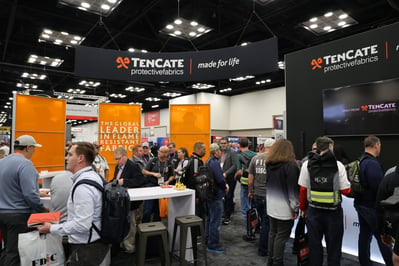Heat stress is a common worry for firefighters, especially during the summertime. However, there are technologies available on the market to support the reduction of heat stress. In this blog, we take a look at some of your options.
Understanding and Combatting Heat Stress
As we know, structural gear is a particularly heavy duty form of PPE. The many layers required within structural gear to keep firefighters safe can also have the side effect of decreasing breathability. We also know that there are a range of garments employed by firefighters, based on setting:
- Stationwear: worn at fire departments
- Wildland: worn in outdoor settings
- Structural gear: worn while in active duty at the site of a fire
A major element of reducing heat stress is about making sure the right garment is worn in the right situation. Within each different type of garment, too, technologies have been improved to make them more comfortable and breathable for the wearer. Let’s take a deeper look into the different types of garments.
Stationwear
Stationwear generally refers to garments such as uniforms, worn at fire stations. Typically, we’ve seen stationwear make use of synthetic fibers; but this is not ideal as it not very breathable.
A technology that we recommend for stationwear is inherent FR blends that utilise a blend of quick drying fibers and moisture absorbing fibers such as Tencel®, that pull moisture and heat away from the body resulting in an evaporative, cooling effect. Tencel® is highly sustainable, soft and breathable — making it an excellent option for day to day wear at fire stations.
Wildland
When it comes to garments that are suitable for wildland settings, what the wearer ideally needs is to feel cool and dry, but at the same protected from the elements. Lightness is key. Garments made with aramid are therefore not suitable, as they are not the most breathable and moisture absorbing.
In the past, wildland garments consisted of a two layer system. Now, there is the option of one layer systems, with similar technology. The two layer system features two fabrics and provides better thermal protection.
Studies and practical experience have shown that it is extremely important to wear single layered garments in this application and to use materials that not only meet the requirements for thermal and mechanical properties, but also offer excellent moisture management. Breathable garments that keep the firefighter dry are key to significantly increasing safety in these extreme situations.
Structural Gear
Structural gear consists of three layers:
- The outer layer: this is the first line of defence and provides thermal protection. If this layer tears, the suit must immediately be repaired or returned.
- The moisture barrier: this blocks chemicals, pathogens, oils and other contaminants. It is not particularly breathable.
- The inner layer: this is what sits directly next to the skin. As the wearer will inevitably sweat, ideally we want the inner layer to pull this sweat away from the skin.
With all these three layers working in tandem, structural gear is often big, heavy, and bulky. Consider that any extra work or effort required by the wearer to move in their garment will lead to more sweat, more exertion and higher chance of heat stress. Therefore, by improving the flexibility of materials and their range of motion, we can make these garments more comfortable and wearer friendly — and in the process, reduce the chance of heat stress. Furthermore, we want to work with materials that improve durability and airflow — so lighter weight materials which don’t compromise on protection are ideal.
Balancing Protection and Breathability
Above all else, the gear worn by firefighters must conform to certain standards and certifications, to keep the wearer safe. The core parameter for all gear in the Ret measurement — which measures the amount of heat and moisture released. It also tells us how breathable and comfortable gear is: the higher the number, the less breathable. Garment manufacturers can provide the Ret measurement for their gear.
When making your selection, it’s key to consider the Ret measurement, alongside the types of fibers used within the gear. And, though it may seem simple, it’s always worth considering if the right gear is used within the right application — potentially saving problems further down the line.








